In 2025, healthcare still faces a frustrating paradox: we’ve digitized the industry, yet EHR interoperability remains one of its weakest links. Providers are capturing more data than ever before—but sharing it meaningfully across systems, networks, and organizations is still a major challenge.
Whether it’s a patient showing up in the ER without access to their oncology records, or a specialist unable to retrieve labs ordered by a PCP in another network, the consequences of fragmented data are real—and costly. EHR interoperability isn’t just a technical concern; it’s a direct threat to patient safety, care continuity, and health equity.
In this blog, we’ll move past the buzzwords and dig into:
- The core challenges blocking true interoperability in 2025
- The clinical, operational, and financial impacts of disconnected systems
- The most promising solutions—from TEFCA to AI-driven data normalization
And what it will take for vendors, providers, and regulators to actually close the loop
If your organization is still navigating EHR workarounds, fax machines, or siloed patient data, now is the time to rethink your interoperability strategy. The systems that connect with purpose will be the ones that define care in the next decade.
Why EHR Interoperability Still Isn’t Solved—Despite a Decade of Digital Health Growth
On paper, the U.S. healthcare system is more connected than ever. Over 90% of hospitals and 80% of office-based physicians use certified EHRs. Billions have been invested in digitizing records, developing standards, and encouraging data exchange.
So why, in 2025, are so many clinicians still relying on fax machines, PDFs, and patient hand-carrying printouts?
- Too Many Standards, Not Enough Standardization
One of the biggest ironies of interoperability is that there are too many ways to “standardize” data. Despite efforts like HL7, CCD, CDA, FHIR, and TEFCA, the way EHRs structure, tag, and transmit data still varies widely across vendors.
- FHIR is powerful—but many EHR vendors implement it differently or partially
- Terminology mismatches (e.g., SNOMED vs. ICD vs. LOINC) create semantic confusion
- Even when data is shared, it’s often not usable or contextually meaningful
- Vendor Gatekeeping and “Information Blocking”
Although the 21st Century Cures Act aims to prevent information blocking, some vendors still restrict data flow through:
- Opaque APIs, requiring complex custom integrations
- Paywalls or licensing fees for accessing essential data exchange features
- Incomplete patient records shared across networks or apps
Despite regulation, business incentives still reward data hoarding, not collaboration.
- Disconnected Care Networks and Data Silos
Patients don’t stay in one health system. Yet:
- A specialist’s EHR may not connect to the referring PCP
- Labs and imaging may live in separate systems entirely
- Home health, behavioral health, and SNFs often lack full EHR integration
The result? Clinicians make decisions without a complete picture, and patients face duplicative tests, delays, and frustration.
- Interoperability ≠ Insight
Even when data is exchanged, it’s often dumped into an “outside records” tab, buried in unreadable PDFs or poorly parsed fields.
- Key labs, diagnoses, or allergies may be unstructured or missing metadata
- Providers don’t trust the quality of imported data
- Nurses and admins waste time re-entering info already sent electronically
This is synthetic interoperability—where data is technically present but practically useless.
What Poor Interoperability Costs Healthcare—Clinically, Financially, and Operationally
The consequences of poor EHR interoperability aren’t abstract—they show up in delayed diagnoses, redundant tests, revenue leakage, and clinician burnout. As the volume of healthcare data explodes, the cost of failing to connect that data in meaningful ways is rising exponentially.
- Clinical Impact: Incomplete Information, Incomplete Care
When providers can’t access full patient histories in real time, care suffers.
- Missed medication allergies or duplicated prescriptions lead to adverse events
- Delays in diagnosis because imaging or lab results are trapped in outside systems
- Preventable readmissions when discharge summaries don’t reach follow-up providers
- Financial Waste: Redundant Testing and Revenue Leakage
Disconnected systems mean repeat work, repeat tests, and repeat charges.
- Hospitals waste billions annually on duplicate imaging, labs, and procedures
- Providers lose revenue when referrals or authorizations are delayed by missing data
- Health systems overspend on manual reconciliation teams to fill in gaps interoperability should solve
- Operational Inefficiency: Manual Workarounds and Staff Frustration
When systems don’t talk, people have to bridge the gap—at the cost of time, morale, and safety.
- Nurses chase down records by phone and fax
- Admins manually re-enter data from outside documents
- Clinicians click through dozens of tabs to compile a basic clinical picture
- Burnout and Risk Aversion
Poor interoperability leads to decision fatigue and defensive medicine. When providers lack trusted, complete data, they may:
- Order “just-in-case” tests
- Avoid specialist referrals
- Hesitate to adjust medications without full history
All of this undermines precision care and contributes to clinician burnout—already at crisis levels.
Interoperability in 2025—What’s Actually Working (and Where the Gaps Remain)
Despite the persistent frustrations, interoperability in 2025 isn’t all doom and duct tape. There are real signs of progress—particularly where federal frameworks, open APIs, and collaborative platforms are gaining traction. But the industry is still far from seamless.
What’s Working
- FHIR-Based APIs Are Becoming the Norm
Fast Healthcare Interoperability Resources (FHIR) is maturing. Major EHR vendors now expose FHIR APIs that:
- Allow apps to pull patient data from multiple systems in real time
- Support secure data access for patients through third-party tools
- Facilitate modular, plug-and-play functionality across platforms
- TEFCA is Laying a National Foundation
The Trusted Exchange Framework and Common Agreement (TEFCA), led by the ONC, is finally operational. It provides a nationwide governance model that:
- Enables health systems and vendors to connect through Qualified Health Information Networks (QHINs)
- Standardizes security, identity verification, and query protocols
- Reduces fragmentation across state-level and vendor-specific HIEs
- Patient Access Tools Are Stronger Than Ever
Thanks to regulatory pressure and consumer demand, patients are gaining greater control over their own records, including:
- API-powered patient portals with full visit history, imaging, and labs
- Integration of EHR data into personal health apps and wearables
- Transparent sharing of visit notes and lab explanations via OpenNotes
Where the Gaps Remain
- Specialty and Post-Acute Care Are Still in the Dark
While large hospitals are increasingly connected, specialty practices, long-term care, and behavioral health often operate with outdated or non-interoperable systems.
- Many still rely on fax or courier for records
- EHR adoption remains uneven due to cost and complexity
- Data-sharing incentives don’t always reach these providers
- Usability and Workflow Integration Still Lag
Even when systems share data, the way that data is presented and integrated into workflows is often clunky or non-actionable.
- External records are buried in tabs or PDFs
- Alerts for shared data are missed or turned off
- Data fields may not map cleanly between platforms
- Cross-System Identity Matching Is Still Inexact
Without a national patient identifier, it’s still difficult to reliably match records across systems, leading to:
- Duplicate records
- Missed allergies or critical history
- Time-consuming manual reconciliation
The Most Promising Solutions—From Smart APIs to Data Normalization and AI-Powered Matching
Solving EHR interoperability doesn’t require starting from scratch—it requires smart use of the tools we already have. In 2025, some of the most effective solutions are emerging from the intersection of open data standards, machine learning, and clinician-centric design.
- API-First Architecture with Smart Routing
Gone are the days of custom, one-off integrations. The future is modular, API-driven, and highly adaptable.
- API gateways can intelligently route queries across multiple EHRs and care networks.
- Apps can plug into multiple systems without rebuilding from scratch.
- Data syncs in near real-time—no more 24-hour lags or manual triggers.
- Semantic Data Normalization Using AI
Getting data out of a system is no longer the problem—it’s making sense of it once it arrives. Enter AI-powered normalization tools that:
- Map various coding systems (e.g., LOINC, SNOMED, ICD) into consistent clinical concepts
- Reconcile medication lists across different naming conventions or dosages
- Use natural language processing (NLP) to extract structured data from free-text notes
- AI-Powered Record Matching Across Systems
Without a universal patient ID, matching records across health systems is still tricky—but AI is improving it with:
- Probabilistic matching using dozens of data points (DOB, zip code, usage patterns)
- Real-time identity resolution engines that flag likely duplicates
- Continuous learning models that improve accuracy over time
- Context-Aware Interoperability
One of the most exciting frontiers is not just sharing data—but doing it in context. That means:
- Delivering the right data to the right user, at the right moment
- Embedding external records into care plans, not just inboxes
- Highlighting risks or gaps in care from external systems in clinical workflows
- Vendor Collaboration and Open Ecosystems
Finally, we’re seeing a shift away from EHR vendor lock-in and toward ecosystems that reward openness.
- Epic, Cerner, and others now support more robust third-party app integrations
- Health systems are forming data collaboratives using shared APIs and trust frameworks
- TEFCA-certified QHINs are reducing friction in joining nationwide networks
What Healthcare Organizations Can Do Now to Strengthen EHR Interoperability
While national frameworks and vendor capabilities are evolving, healthcare organizations don’t have to wait for perfect conditions to improve interoperability. The most forward-thinking systems are making targeted moves today that pay off in care quality, cost control, and clinician satisfaction.
Here’s how you can start strengthening EHR interoperability from the inside out:
- Audit Your Current Interoperability Landscape
You can’t fix what you don’t measure. Start with a clear-eyed view of:
- Which systems can send and receive data—and in what formats
- Where critical information is getting lost, duplicated, or delayed
- How external records are being surfaced (or ignored) in workflows
- Push Vendors for API Access and FHIR Conformance
EHR vendors respond to market pressure. Make interoperability a condition of your partnership by:
- Requiring FHIR API endpoints for labs, meds, allergies, and notes
- Asking for support with app integrations that reduce login fatigue
- Clarifying how they participate in TEFCA or QHINs
- Prioritize Usability in How Shared Data Is Displayed
Interoperability isn’t just about access—it’s about presenting the right information clearly and contextually.
- Embed external data directly into problem lists, med histories, and treatment plans
- Avoid burying records in “outside documents” tabs
- Use interface design to distinguish verified vs. imported data
- Train Staff on Navigating and Trusting Shared Data
Even the best-connected systems fall short if users don’t know how to navigate or verify shared information.
- Offer micro-training on external record retrieval and reconciliation
- Create quick-reference guides for interpreting out-of-network records
- Build clinician trust by flagging structured vs. free-text vs. third-party content
- Start With Use Cases That Directly Impact Quality Metrics
Want buy-in? Start where interoperability improves measurable outcomes:
- Avoidable readmissions
- ED utilization
- Transitions of care (TOC) documentation
- Preventive care gaps
- Join a QHIN or Regional HIE with TEFCA Alignment
Don’t wait for national mandates to trickle down. Partner now with:
- Regional Health Information Exchanges (HIEs) that support real-time queries
- HINs participating in the TEFCA framework
- Vendors and third-party platforms with proven interoperability credentials
Conclusion:
EHR interoperability in 2025 is no longer a matter of technical feasibility—it’s a measure of clinical quality, operational maturity, and system-wide trust. While progress has been made through frameworks like FHIR and TEFCA, true interoperability remains uneven and, in many settings, frustratingly out of reach.
The good news? The solutions are here. From API-first architectures and AI-powered record matching to real-time data normalization and smarter patient identity resolution, healthcare organizations now have the tools to turn fragmented systems into unified, usable platforms for better care.
What matters most is strategic execution: choosing vendors that prioritize openness, redesigning workflows for usability, and building cultures that treat interoperability as a clinical asset—not an IT burden. Because in the end, better-connected systems lead to better-connected care. And that’s what every patient—and provider—deserves.




More Stories
The Role of EHRs in Enhancing Patient Care and Safety
The Impact of AI Listening Tools in Patient Care
Leveraging Data to Optimize Care Coordination